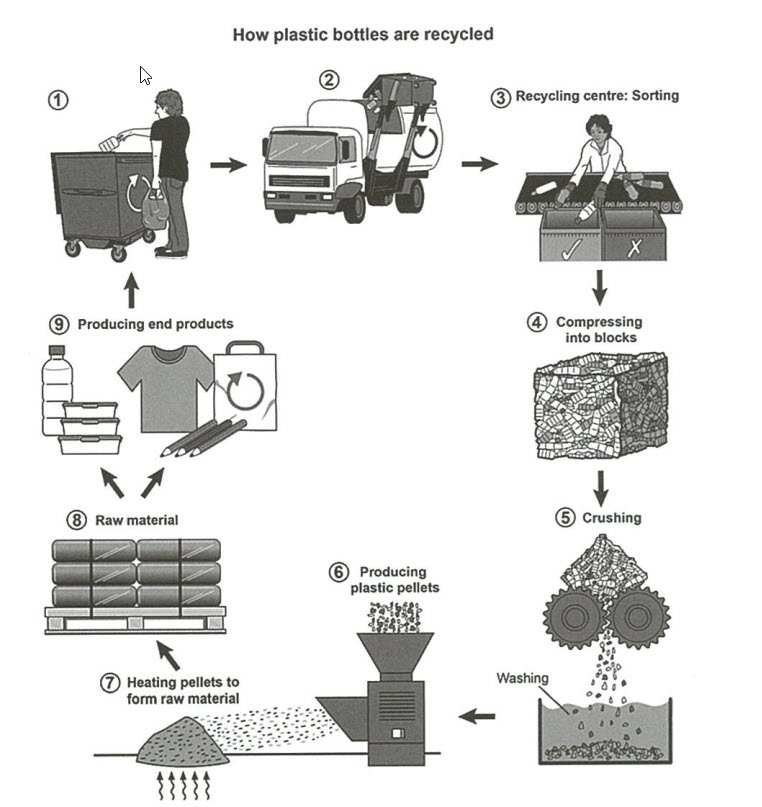You should spend about 20 minutes on this task.
The diagram below shows the process for recycling plastic bottles. Summarise the information by selecting and reporting the main features, and make comparisons where relevant.
Write at least 150 words.

Sample Answer
The diagram illustrates the plastic bottle recycling process.
Overall, the recycling of plastic bottles has nine steps starting from placing the bottles in the designated bins to the producing end consumer products like bags, t-shirts and pencils – which would be recycled again once they are used.
As the illustration depicts, the first step of recycling plastic bottles begins with people placing them in specified recycle bins. Next, those bottles are collected and transported to recycling centres where workers sort out recyclable plastic bottles from others. Selected bottles are then compressed and converted into large blocks which are, afterwards, sent through crushing machines. The crushing process produces small pieces which are then washed before feeding them into a machine to make plastic pellets.In the next step, heat is applied to the pellets which ultimately form the raw materials for producing different plastic-made consumer goods. Next, the raw materials are refined and rolled which is used to manufacture end products like t-shirts, pens, plastic bottles, containers, and so on. To reiterate the recycling process, the end products are placed in the designated bins once they get torn out or used. It keeps the plastic recycling process keep going.
